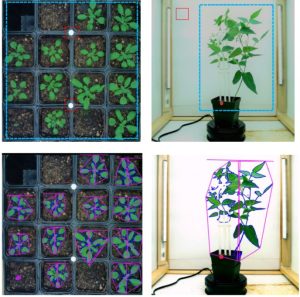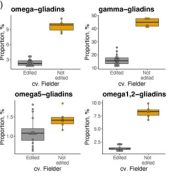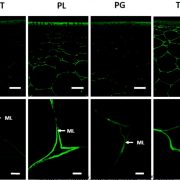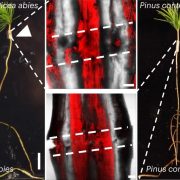Development of a low-cost plant phenotyping facility
 New technologies, like personal computers or smart phones, often have limited adoption due to their high cost or requirement for advanced technological skills. Greater affordability and ease of use leads to greater adoption. Here, Yu, Sussman et al. describe the development of an affordable, portable plant phenotyping platform and pipeline that is easy to build and use. For the image collection station, they employ low-cost Raspberry Pi cameras and computers, wooden frames, LED lights, and 3D-printed components to hold everything in place. To this they add a workflow, RaspiPheno Pipe and RaspiPheno App (https://github.com/Leon-Yu0320/BTI-Plant-phenotyping/tree/main/RasPiPheno_APP) that automates image analysis and makes these steps accessible even to those without extensive computer skills. As proof of concept, they used this platform for a phenotypic analysis of stress responses using Arabidopsis, cowpea (Vigna unguiculata), and tepary bean (Phaseolus acutifolius). Through imaging of a cowpea diversity panel and GWAS, they identified several loci associated with drought resilience, and tested them functionally through analysis of Arabidopsis T-DNA mutants. The manuscript includes extensive notes on building and using these low-cost phenotyping facilities, supplemented by additional information at protocols.io. (Summary by Mary Williams @PlantTeaching) Plant Physiol. 10.1093/plphys/kiae237
New technologies, like personal computers or smart phones, often have limited adoption due to their high cost or requirement for advanced technological skills. Greater affordability and ease of use leads to greater adoption. Here, Yu, Sussman et al. describe the development of an affordable, portable plant phenotyping platform and pipeline that is easy to build and use. For the image collection station, they employ low-cost Raspberry Pi cameras and computers, wooden frames, LED lights, and 3D-printed components to hold everything in place. To this they add a workflow, RaspiPheno Pipe and RaspiPheno App (https://github.com/Leon-Yu0320/BTI-Plant-phenotyping/tree/main/RasPiPheno_APP) that automates image analysis and makes these steps accessible even to those without extensive computer skills. As proof of concept, they used this platform for a phenotypic analysis of stress responses using Arabidopsis, cowpea (Vigna unguiculata), and tepary bean (Phaseolus acutifolius). Through imaging of a cowpea diversity panel and GWAS, they identified several loci associated with drought resilience, and tested them functionally through analysis of Arabidopsis T-DNA mutants. The manuscript includes extensive notes on building and using these low-cost phenotyping facilities, supplemented by additional information at protocols.io. (Summary by Mary Williams @PlantTeaching) Plant Physiol. 10.1093/plphys/kiae237









